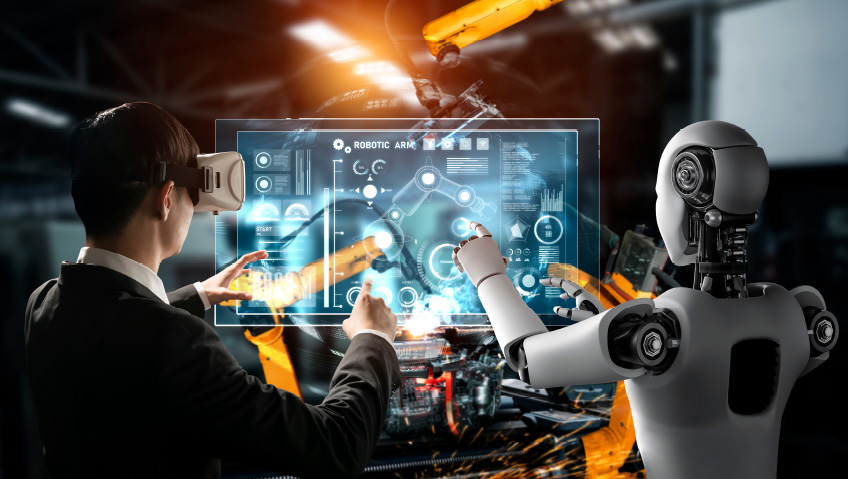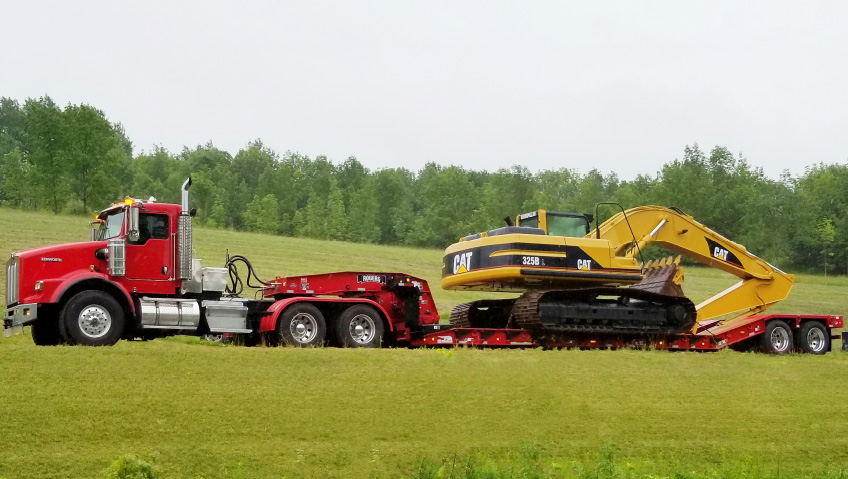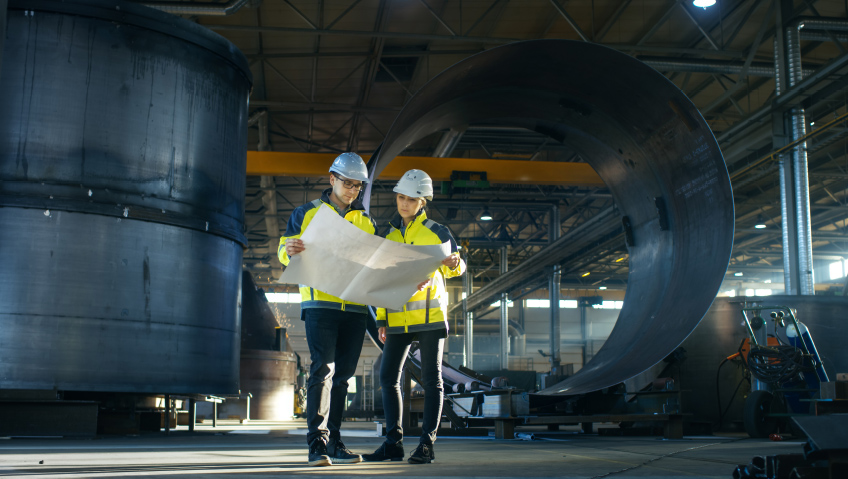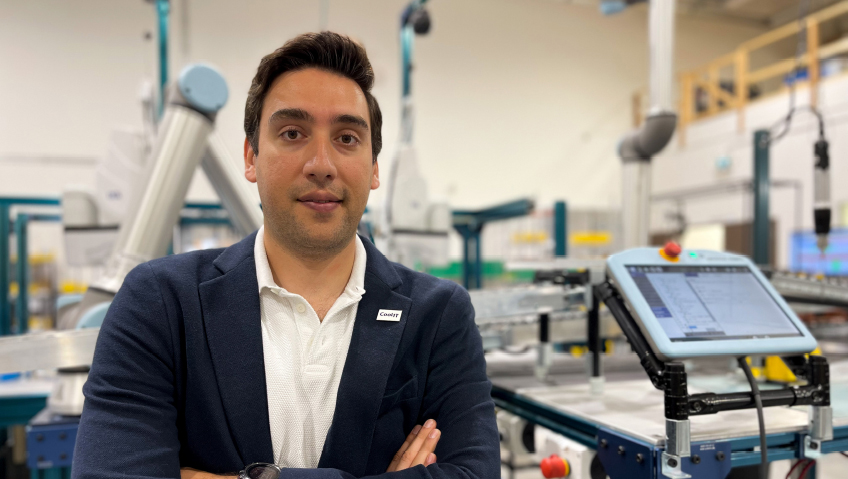Somehow, in the midst of the fourth industrial revolution, there is still a somewhat common belief that robots and AI are terrible things. This myth hinges on the beliefs that robotic technology will replace human workers, and that all those poor people will be jobless and destitute, or that AI will take over decision-making on the grand level and decide to wage war on humanity. Nothing could be further from the truth – and in the world of manufacturing, we can show just that.
“In the near future artificial intelligence will most likely replace tasks, not jobs. The good news is that it will also create new markets and jobs,” Laura Buckler aptly summarizes in ROBOTIQ. “We might need additional education and re-training for those jobs, but the opportunities will be there.”
An example of such a task replaced is any repetitive job on an assembly line – a job that has defined the industry since its innovative inception in the 20th century, starting in automotive. It could be picking out bad parts, or separating green tomatoes from red ones, or simply filling a box with items, or aligning items properly for the next task in the line. As these tasks are replaced with machines that can do them just as well or better, it doesn’t eliminate the worker, just the task.
Robotic technology has overtaken some of the major functions in manufacturing once delegated to human workers, namely the repetitive, routine, mundane and often dangerous tasks. And this technology is no longer exclusive to large factories; smaller businesses are utilizing automation solutions to their advantage as well.
This trend will only increase with evolving IoT and digitalization. The robotic revolution is proving to be safer, reliable and cost-effective with manufacturers seeing a great return on this investment in a year or less. Automation technology allows manufacturers to turn their focus toward innovation that will not only create more jobs, but create jobs for a more educated and highly skilled workforce.
According to a Statistic Canada report from 2020, manufacturing companies that invested in and employed robots hired 15 percent more human workers. And according to the Association for Advancing Automation (A3) President Jeff Burnstein “Factory automation has allowed companies to keep manufacturing jobs in the U.S. that would otherwise go overseas” he told Investor’s Business Daily. “Robots may take over certain tasks but workers get reassigned to other jobs. If you’re doing some dull, dangerous or dirty job, maybe a robot is doing that now and you’re doing some more productive thing for the company … And in the overall scheme, jobs are growing.”
Supporting this conclusion, Gustavo Sepulveda, process automation business head at Panasonic told Design News “Automation reduces the cost of manufacturing goods, it helps to produce with more quality, efficiency and safety. That generates revenue and more jobs … It is proven that countries with the highest automation density have lower unemployment rates.”
For many companies, a sudden shift to a fully automated line is a daunting change, but Sepulveda claims that such change can – perhaps should – be gradual. It may be possible to initiate automation gradually in one aspect of a company’s tasks and increase the complexity over time. And as new technology becomes available, there are certainly advantages to being flexible to upgrade.
According to a recent Pricewaterhouse Coopers (Pwc) report, close to 60 percent of manufacturers are utilizing some form of robotics technology. That percentage is expected to increase.
Humans and robots working together
The worrisome idea was that robots would replace workers, but the truth we see today is that people and machines working together yields better results for many applications. While robotic technology is set to operate on the repetitive and often dangerous tasks, employees are free to make decisions and handle tasks that require more analysis or creative thought. While a machine is handling the mundane, the worker might see potential problems before they become disasters, or be able to reason out a better way of doing something. Of course it depends on the environment and the tasks, but the human-robot relationship should be symbiotic, not competitive.
As MIT professor and economist David Author stated in an article in Manufacturing Automation about the introduction of robotics in factories “Most managers thought they were turning workers into unskilled machine tenders,” But rather the result was “A higher demand for people who could do abstract reasoning and control those machines.”
And those companies that invest in and train their employees to work together with and manage utilized robotic technology will benefit from a safer, more efficient and productive workforce ultimately creating better job satisfaction and a long-term commitment.
As with many industries, labour shortages are of major concern in manufacturing (far from that prediction that we’d have jobless workers who’ve been replaced) and many companies are investing in internships to help develop STEM skills specific to their needs. Many firms have partnerships with high schools and community colleges for individual internships. Others are working in conjunction with government agencies and career assistance organizations or taking advantage of economic development funds in order to establish skilled-trades apprenticeship programs.
According to a study published in the World Economic Forum – The Robot Revolution: Managerial and Employment Consequences for Firms, co-author Lynn Wu, professor of operations, information and decisions at Wharton School of the University of Pennsylvania, says that “Any employment loss in our data we found came from the non-adopting firms. These firms become less productive, relative to the adopters. They lost their competitive advantage and, as a result, they had to lay off workers … The story is really about how do you leverage technology better to become more productive, to become more competitive? And how do you change your managerial firm practices so you can get the most out of your robot technologies?”
In conclusion, the manufacturing industry is in constant transition with newer technologies replacing the older technologies of the past, but these advancements are not killing jobs. Quite the opposite is true, as firms adopting innovative technology are thriving and growing, hiring skilled workers in jobs that are far more rewarding and healthy than ever before in the manufacturing industry.






